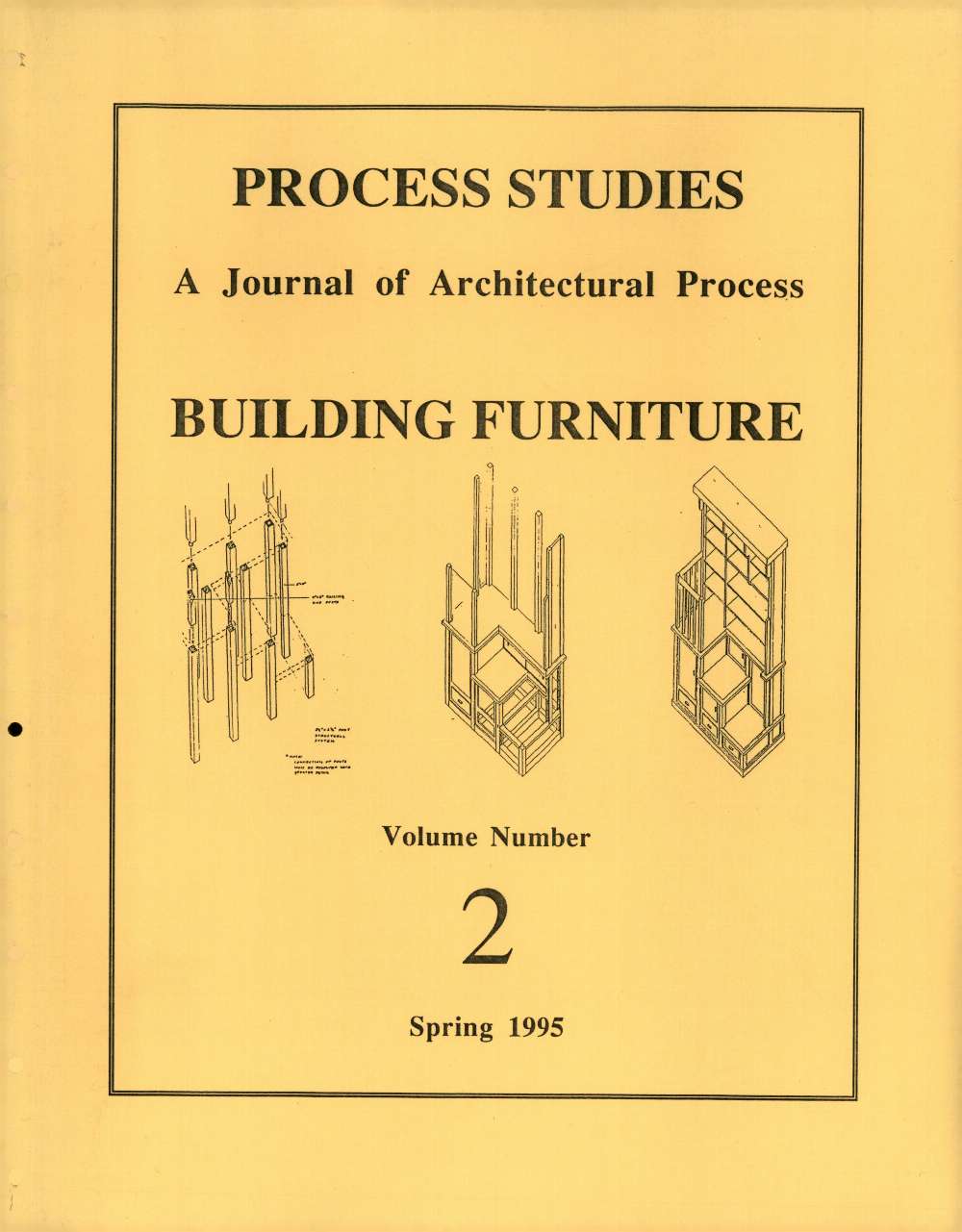
“Process Studies: A Journal of Architectural Process – Building Furniture”, Vol. 2, Spring 1995, edited by Hansjoachim Neis with Chris Gutsche. It includes the work completed by students in the design studios Arch. 201, for five consequitive years, starting in Fall 1990 until Fall 1994, tutored by Christopher Alexander and Hansjoachim Neis
01/03/1995The journal, 102 pages in total, starts with “Notes from the Editor” in which Neis describes the scope and essentials of this course on process and furniture. It then presents the twenty six papers on the pieces of furniture the students had designed and built within a period of four weeks, focusing on the essential process aspects they had followed for making them. The pieces of furniture included, were built by students who attended the Building Process Area of Emphasis in the Architecture Department, from 1990 to 1994, with Christopher Alexander and Hansjoachim Neis as core faculty. There is a list of the furniture projects, and each one of them is presented with a photo, and a description of the process, accompanied with sketches in several cases. The pieces of furniture were exhibited in Wurster Hall from May 3, 1995 to May 17, 1995.
-
Building Process Area of Emphasis: Construction experience course - Building Furniture
1995
Designing and building a piece of furniture, starting with sketches, then going to 1/2 inch models, to be followed by a real scale mockup from cardboard or wooden pieces, and finally building the piece of furniture. The goal being to ...
-
Building Process Area of Emphasis: Intergrated Design Studio - New Ryde Project
1991
Students worked on a real project, located outside of Sacramento. The scope was to develop and define the rules for the layout of public spaces and residential buildings, for an integrated development of affordable, middle-income residential and commercial buildings, focused ...
-
Building Process Area of Emphasis: Integrated Design Studio - Development of Santa Cruz & Furniture Making
1990
Design studio to lay the foundation for a single integrated view of design, building and planning, which extended from the smallest parts of the building fabric to the largest parts of cities. The goal was a complete integrated picture of ...




 Go Back
Go Back